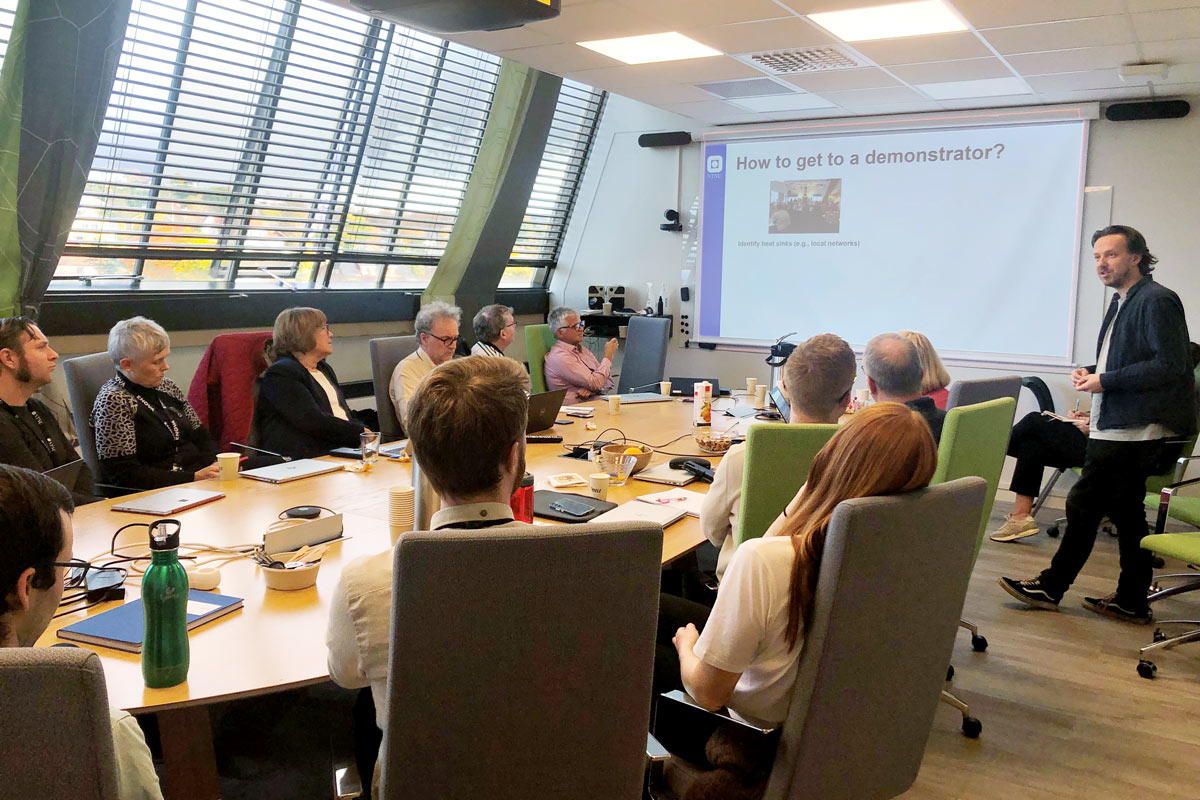Norwegian power production will have to increase markedly in the coming years due to the establishment of new industries, such as data centers and battery factories, as well as the increasing electrification of both industry and vehicles. This will require large investments, in both production capacity and expansion of the distribution grid. At the same time, more than 20 TWh/y of surplus heat is rejected from the Norwegian process industry. In this context, the utilization of available surplus heat to cover some of the energy needs of industrial processes can prove to be a more optimal and sustainable solution.
Figuring out the opportunities and barriers connected with surplus heat utilization was the main topic addressed at one of the internal workshops organized by HighEFF. The workshop gathered representatives from different industrial sectors (metal industry, oil and gas, food industry and technology providers) as well as researchers from SINTEF, NTNU and KTH and relevant organizations such as ENOVA and Kunnskapsparken Helgeland. The practical experience and considerations from industry, combined with the ideas and novel concepts explored by researchers were used as a base to fuel discussions around the topic of surplus heat utilization.
Why surplus heat?
Surplus heat is a by-product of all industrial processes. Over 20 TWh of surplus heat is produced every year by the Norwegian industry alone. Due to lacking heat demand nearby or suitable technologies to capture it, this heat is simply dissipated to the surroundings –though warm exhaust gases, for example. If this surplus heat was instead utilized by other industrial processes requiring heat, it could save large amounts of energy and reduce the load on both power production and distribution.
Industry not only as an energy consumer, but also as an energy producer
Today, the Norwegian industry annually consumes 173 TWh of energy, including energy carriers that are used as raw materials. A large part of this energy is currently dissipated to the ambient as heat. The concept of surplus heat is a rather new concept, as relatively little attention has been paid to it in the past. For this reason, a limited amount of data is available and estimations on surplus heat availability might be rather conservative. With the notion of surplus heat, industries become themselves producers of energy in the form of heat.
The use of the available surplus heat in different industrial processes could replace consumption of other forms of energy, such electricity or fossil fuels. This would make electricity available for other purposes, where electricity is more difficult, or it could reduce CO2 emissions when replacing the use of fossil fuels.
In some cases, surplus heat can find application within the industry where it is produced. When this is not possible, surplus heat can be made available for use by external heat consumers. Different examples can be found where surplus heat is externally exploited. This is often done by delivering the surplus heat to a district heating net that distributes to the consumers. Sometimes the heat is treated like goods to be sold, with a price that– while being lower – often follows the electricity price. This gives economic benefits both to the industry selling the surplus heat and to the one buying it. In other cases, surplus heat is seen as a collective asset by a group of industries having the common goal to reduce their overall energy use. Such instances require high levels of trust and close relationships between the industries. In some other cases, typical of large industries in small communities, heat is provided to the community nearly for free, as a way to consolidate the relationship between the industry and the local community.
The utilization of surplus heat therefore has values at different levels.
What are the challenges?
Despite the benefits of utilizing surplus heat, most of it remains untapped. An ENOVA study found that almost half of the industrial surplus heat is considered as “not available” due to lack of infrastructure. Location is a key factor when it comes to the possibility for utilization of surplus heat. This represents a significant barrier as the largest, and most heat producing industrial plants are generally located in smaller communities with very limited heat demands.
Due to historically low energy prices in Norway, there have not been many drivers for industrial energy recovery, and many fields lack engineering solutions for energy recovery and increased energy efficiency. A knowledge gap has been identified as a key barrier to implementing energy recovery. While specific solutions for energy recovery are well established in some industrial segments, they might be new to other industries and be typically met with skepticism. This is an example of non-technical barriers.
Surplus heat utilization will require in many cases the creation of an industrial cluster, where dependencies between different industrial actors are present. This kind of dependency involves a high level of uncertainty and risk.
Surplus heat producers should have undisputable benefits to find utilization for their surplus heat. This is not the case at the moment, as to deliver surplus heat to other businesses often comes with few financial benefits. With these premises, an external mechanism needs to come into place to make this happen, either in the form of incentives/compensation or in the form of a cost for wasting energy. If the trend continues, increasing energy prices could also serve this purpose, as surplus heat would acquire a higher value. Current types of incentives are often of a non-economic nature such as public opinion and image building.
Unlike electric power, heat can have different qualities, mainly depending on its temperature level. Higher temperature heat has a broader spectrum of applications, from power production to a variety of industry processes. The lower the temperature, the fewer applications heat can have.
These are some of the challenges we are trying to understand on a deeper level within the FME HighEFF research centre. An important step towards a larger utilization of surplus heat is to develop new knowledge and understanding through research and innovation together with relevant private and public actors. The large engagement in the workshop by partners from different industry sectors shows the importance of a centre such as HighEFF, as an arena for discussion across industrial sectors. This allows actors from different industrial segments to come together and discuss common challenges as well as learn from each other’s experience.










Comments
No comments yet. Be the first to comment!